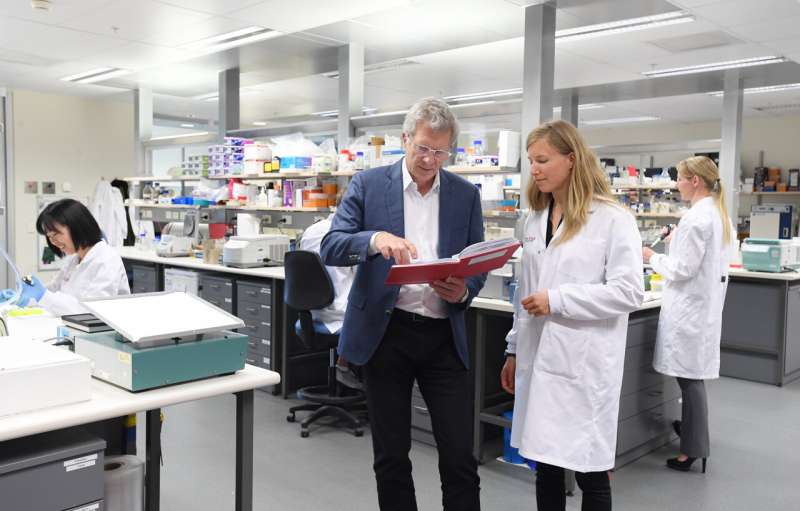This article has been reviewed according to Science X's editorial process and policies. Editors have highlighted the following attributes while ensuring the content's credibility:
fact-checked
peer-reviewed publication
proofread
Mapping the heart to prevent damage caused by a heart attack

Scientists at the Victor Chang Cardiac Research Institute in Australia have produced a first of its kind integrated map of heart cells which unlocks the process of cardiac fibrosis—a major cause of heart failure.
The discovery opens new avenues to develop targeted drugs to prevent scarring damage caused after a heart attack.
During and after a heart attack, the heart's muscles are damaged, leading to the formation of scar tissue which lacks the elasticity and contractility of healthy heart muscle. This damage is permanent and can affect the heart's ability to pump blood, eventually leading to heart failure.
Professor Richard Harvey, who led the study alongside the Institute's Dr. Ralph Patrick and Dr. Vaibhao Janbandhu, says the discovery is a major step forward in understanding cardiac fibrosis—which accompanies virtually all forms of heart disease including the overloading of the heart due to high blood pressure.
"Millions if not billions of dollars have been poured into seeking new drugs to control cardiac fibrosis over the years, but these efforts have largely failed. There is an urgent need to develop novel treatments that could arrest or even reverse cardiac fibrosis, benefiting millions," says Professor Harvey.
"Fibrosis is an essential part of the body's way of healing. But in the heart, if the disease triggers are not resolved, the process can go too far, causing scarring that is incredibly harmful to heart function and a major cause of heart failure.
"For the first time, using revolutionary technology that enables us to analyze gene expression in single cells, we have been able to map out the progressive cell states involved in cardiac fibrosis and how these cells evolve day by day."
The team analyzed RNA signatures from 100,000 single cells focusing on those involved in fibrosis, integrating data from several pioneering studies on a variety of heart disease states.
It allowed them to produce an integrated cellular map of a mouse model heart that pinpoints cells and pathways involved in fibrosis.
The study identified resting cells, activated cells, an inflammatory population, a progenitor pool, dividing cells, and specialized cells called myofibroblasts and matrifibrocytes.
It discovered that myofibroblasts—which are believed to be the major drivers of scarring but absent in healthy hearts, start to form three days after a heart attack in a mouse model, before peaking at day five. They are then resolved to a form called matrifibrocytes, which may prevent the scar from resolving.
The study, published in Science Advances, also explored other heart disease models of heart failure induced by high internal blood pressures as a result of aortic stenosis, or hypertension.
Dr. Vaibhao Janbandhu says, "We found a surprising similarity in fibrosis progression in very different types of heart diseases. Myofibroblasts were abundant early on during hypertension and then resolved into matrifibrocytes, just as they are after a heart attack.
"This opens the doors to future therapies that will be able to target specific cell types or processes in different heart diseases. This will hopefully prevent healthy cells from being permanently damaged."
The study used data from both mouse models and human patients. In humans, heart failure may take decades to evolve, so the exact cell types and the timing of processes in human patients need to be explored in greater detail.
Dr. Janbandhu adds, "Persistent high blood pressure can have devastating consequences, but it is treatable, highlighting the need to monitor for high blood pressure and get it under control quickly."
The team has also created the "CardiacFibroAtlas," a resource web tool for researchers worldwide. It allows users to visualize and analyze how genes behave in heart attacks and related health problems.
More information: Ralph Patrick et al, Integration mapping of cardiac fibroblast single-cell transcriptomes elucidates cellular principles of fibrosis in diverse pathologies, Science Advances (2024). DOI: 10.1126/sciadv.adk8501. www.science.org/doi/10.1126/sciadv.adk8501





















